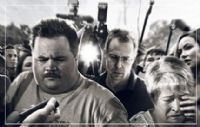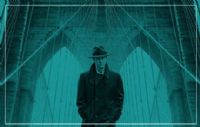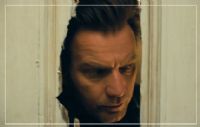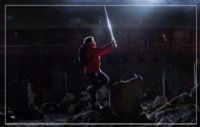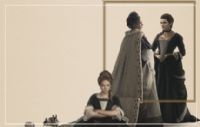REVIEW: Hell Is Other People...
Date: 17/05/2019
Movie Review
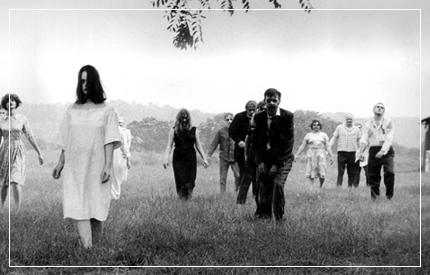
Night of the Living Dead, 50 Years On:
A woman walks across a graveyard. Suddenly an older man, swaying and out of it, grabs her. Her brother intervenes and the woman runs to her car. The man follows and puts a brick through the side window. The woman drives but hits a tree. She gets out and runs, screaming, but the man pursues at a drowsy, persistent pace. She sees a house and finds an unlocked door, but the man, slurring, slouching, prowling ŌĆö well, heŌĆÖs right there outside and he wants to get in.
The woman, shifting from PTSD shock to hysteria, vents to the man who saves her: ŌĆ£He was grabbing me! He was tearing my clothes!ŌĆØ
How many times has this scene played out? How many women walking alone have just about escaped the clutches of the living dead? How many havenŌĆÖt?
Lean in story, mythology and production budget, George A. RomeroŌĆÖs 1968 Night of the Living Dead, the film that brought the undead to life for Western cinema, is a Rorschach horror in muddy monochrome. Stare long enough at the black and white and youŌĆÖll see what youŌĆÖre looking for.
The simplicity gives the film power. A group of strangers hunker down in a lonely farmhouse, boarding up windows and listening to radio and television broadcasts about the threat outside: the recently deceased are being re-animated, turned into ŌĆ£ghoulsŌĆØ with a hunger for human flesh. The cause? Space radiation. They donŌĆÖt like fire and only a headshot puts them down.
A newsman in thick glasses sits in front of clocks and tells citizens to stay inside and await further instructions. Are the living dead the phone-glued slow walkers of your Monday morning trek to work? Are they mindless consumers, the Black Friday TV snatchers? Are they political drones? Are they racists?
The film is basically about a black man in rural America defending himself against white hordes. The freeze frames of the credits, in which a black body is manhandled by a white militia, look like postcards from one of the negro-butchering amusements related in this yearŌĆÖs BlacKKKlansman.
Night of the Living Dead┬Āand the zombie lineage┬Āinvites all sorts of readings, but at its core itŌĆÖs about what happens when a large part of society suddenly, and for no logical reason, turns on its neighbours. The imagery of the brainless, grabbing, swallowing mob is a potent one for any period of social unease. The citizenry is literally consuming itself.
Inside the house, the survivors have their own little disorder. Ben (Duane Jones), the black man who is the de facto leader, wants everyone to stay on the first floor, where there is communication and more means of escape. Harry (the perfectly surnamed Karl Hardman) wants to stay in the basement with his wife and sick daughter (watch out!). A young couple arenŌĆÖt sure. The woman from the start, Barbra (Judith OŌĆÖDea), is barely functioning.
In the tense macho squabbling itŌĆÖs not to read a subtextual tussle about race, status and authority. Enough white people in one place, youŌĆÖve got yourself a lynch mob.
Or maybe theyŌĆÖre city centre lads on a Friday night. Maybe theyŌĆÖre gurning frat boys holding a woman down. Maybe theyŌĆÖre a stadium of red hats booing journalists. The Red Scare is over but Americans, ever resourceful, have learned new things to be afraid of.
Even without the evergreen thematics, Night of the Living Dead remains a tight, exciting survival drama, Cold War paranoia laced with high-contrast European glamour. We hit ŌĆśpeak zombieŌĆÖ a while ago, but half a century later, their arrival still feels fresh. It hums with body heat.
Conor Smyth
This review appeared in The Big List 300.
A woman walks across a graveyard. Suddenly an older man, swaying and out of it, grabs her. Her brother intervenes and the woman runs to her car. The man follows and puts a brick through the side window. The woman drives but hits a tree. She gets out and runs, screaming, but the man pursues at a drowsy, persistent pace. She sees a house and finds an unlocked door, but the man, slurring, slouching, prowling ŌĆö well, heŌĆÖs right there outside and he wants to get in.
The woman, shifting from PTSD shock to hysteria, vents to the man who saves her: ŌĆ£He was grabbing me! He was tearing my clothes!ŌĆØ
How many times has this scene played out? How many women walking alone have just about escaped the clutches of the living dead? How many havenŌĆÖt?
Lean in story, mythology and production budget, George A. RomeroŌĆÖs 1968 Night of the Living Dead, the film that brought the undead to life for Western cinema, is a Rorschach horror in muddy monochrome. Stare long enough at the black and white and youŌĆÖll see what youŌĆÖre looking for.
The simplicity gives the film power. A group of strangers hunker down in a lonely farmhouse, boarding up windows and listening to radio and television broadcasts about the threat outside: the recently deceased are being re-animated, turned into ŌĆ£ghoulsŌĆØ with a hunger for human flesh. The cause? Space radiation. They donŌĆÖt like fire and only a headshot puts them down.
A newsman in thick glasses sits in front of clocks and tells citizens to stay inside and await further instructions. Are the living dead the phone-glued slow walkers of your Monday morning trek to work? Are they mindless consumers, the Black Friday TV snatchers? Are they political drones? Are they racists?
The film is basically about a black man in rural America defending himself against white hordes. The freeze frames of the credits, in which a black body is manhandled by a white militia, look like postcards from one of the negro-butchering amusements related in this yearŌĆÖs BlacKKKlansman.
Night of the Living Dead┬Āand the zombie lineage┬Āinvites all sorts of readings, but at its core itŌĆÖs about what happens when a large part of society suddenly, and for no logical reason, turns on its neighbours. The imagery of the brainless, grabbing, swallowing mob is a potent one for any period of social unease. The citizenry is literally consuming itself.
Inside the house, the survivors have their own little disorder. Ben (Duane Jones), the black man who is the de facto leader, wants everyone to stay on the first floor, where there is communication and more means of escape. Harry (the perfectly surnamed Karl Hardman) wants to stay in the basement with his wife and sick daughter (watch out!). A young couple arenŌĆÖt sure. The woman from the start, Barbra (Judith OŌĆÖDea), is barely functioning.
In the tense macho squabbling itŌĆÖs not to read a subtextual tussle about race, status and authority. Enough white people in one place, youŌĆÖve got yourself a lynch mob.
Or maybe theyŌĆÖre city centre lads on a Friday night. Maybe theyŌĆÖre gurning frat boys holding a woman down. Maybe theyŌĆÖre a stadium of red hats booing journalists. The Red Scare is over but Americans, ever resourceful, have learned new things to be afraid of.
Even without the evergreen thematics, Night of the Living Dead remains a tight, exciting survival drama, Cold War paranoia laced with high-contrast European glamour. We hit ŌĆśpeak zombieŌĆÖ a while ago, but half a century later, their arrival still feels fresh. It hums with body heat.
Conor Smyth
This review appeared in The Big List 300.


























